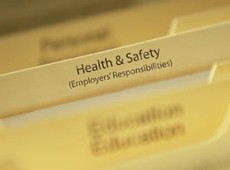Legal checklist: Violence at work

The Health and Safety Executive defines violence at work as being: ‘any incident in which a person is abused, threatened or assaulted in circumstances relating to their work.’
Verbal abuse and threats are the most common causes of ‘violence’. In the licensed trade there will undoubtedly be an increased risk of all types of violence given the fact that the consumption of alcohol is involved. If you believe that any of your employees are likely to be abused, threatened or assaulted, you must conduct a risk assessment.
Why should violence at work be my concern as an employer?
Verbal abuse, threats, intimidation and physical abuse affect everybody in different ways. Some people are not affected by it but the majority of people are, particularly if it lasts for prolonged periods of time.
Violence at work can lead to employee absenteeism, poor morale, poor image of the organisation, increased staff retention problems, compensation payments and increased insurance premiums.
Employees will suffer stress, lack of confidence, endure pain, and potentially suffer disability and their general overall well-being can be seriously affected.
Health and safety law expects employers to look after the health, safety and welfare of all of its employees.
If my employee is assaulted do I need to do anything?
If an employee suffers an injury at work caused by a physical assault in the course of their employment and they are incapacitated from work for more than 7 days or suffer a major injury e.g. broken arms, legs, nose then the employer must notify the accident to the enforcing authority. An accident form (F2508) must be completed online.
How should I go about managing violence at work?
The first step is to see if you have a problem. You may think that you don’t have any concerns but your employees may think differently.
- Review the accident book or records.
- Review sickness records for frequent, short duration absences for fairly minor ailments.
- Talk to your employees.
- Start keeping detailed records of any incidents.
- Play the “what if” scenario to try to predict what might happen if certain circumstances occur.
If you identify that you have a problem, and it can be infrequent, then you must put in place some control measures to reduce the consequences and effects of the violent abuse etc.
I can't prevent my employees from being exposed to violence - what should I do?
The law on hazard and risk, states that if you cannot eliminate a hazard you must reduce it to an acceptable level. In the pub and leisure industry, staff will inevitably be subject to verbal abuse and it will be impossible to eliminate the violence - but what an employer must do is take measures to reduce the effect it has on individuals.
Employees will benefit from training courses on how to deal with violence and aggression from customers and members of the public and although you might not stop the verbal abuse the employee will be better prepared to cope with it.
People who work in pubs/clubs have identified the following methods for dealing with potential violence:
- Focusing on training – particularly on identifying and resolving conflict. Refresher training is important and staff should know the procedures for dealing with violence.
- Having approachable and active managers.
- Ensuring you gather accurate information to give to the police if needed.
They have also used the following measures to tackle the problem:
- Banning persistent offenders.
- Using CCTV as a deterrent and to identify and prosecute offenders.
- Using well trained security staff as a deterrent and to make customers feel safer.
- Working with other pubs/clubs to ban offenders from all pubs in the area or to share security resources.
- Providing enough staff to reduce queues and provide effective supervision.
What are the effects of violence on employees?
Violence can cause both physical and psychological injury and illness. Victims respond differently to violence, both in terms of the emotions they experience and the time taken to recover from the incident. Their reaction will depend on a number of factors that include, but are not limited to:
A victim’s psychological response to violence can be immediate or delayed and their trauma can be short or long term. Typical psychological responses to violence include sleeping difficulties, anxiety (fear of returning to work, flashbacks, disturbing dreams etc), changes in personality (aggression, anger, depression, hypersensitivity etc), grief and even feelings of guilt.
It is important to consider that:
- An experience may be perceived as violent by one employee, but not necessarily considered violent by another;
- The psychological injuries that result from violence may be more debilitating to the victim than the physical injuries;
- Verbal abuse and threats are the most common types of incident, physical attacks are comparatively rare.
- Carry out a Risk Assessment for violence and aggression:
- Identify if you have these incidents
- Who will be affected
- What will be the consequences
- How can you eliminate or reduce the incidents
- Implement control measures
- Consult with staff – ask them what the incidents are, how often, how they are affected.
- Consider verbal abuse as well as any risk of physical violence.
- Have a policy in place.
- Have an “after incident” policy so that you and your employees know what support to expect and how to get it.
- Train staff in non-violent techniques, non-confrontational behaviours, how to placate angry people, how to handle aggression.
- Consider the environment – where can violence happen unseen, what might trigger an incident.
- Make sure you have enough staff to deal with the expected demand.
- Implement zero tolerance for all incidents.
- Take disciplinary action against employees who subject colleagues or others to physical or verbal abuse.
Pat Perry is executive chairman at health and safety consultants Perry Scott Nash







